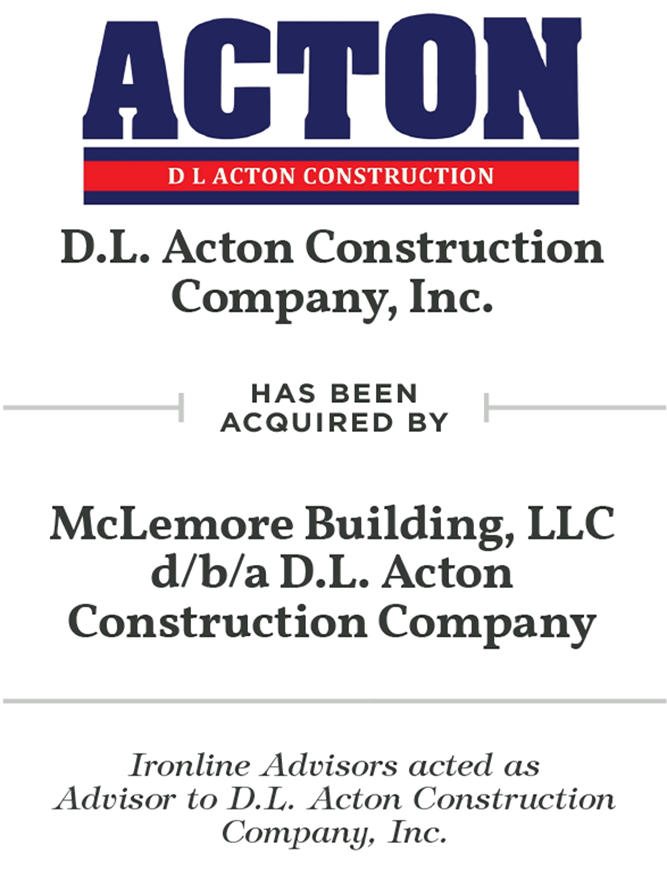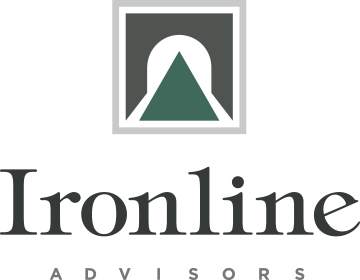By Stan Bailey, Chairman – Ironline Advisors
Many business owners are living through the second major economic crisis during their professional careers.
Some hoped that the Great Recession of 2007-2010 was their last economic crisis while also benefiting from the healthiest economic period in U.S. history from 2012 through 2019. In the first quarter 2020, the Covid 19 Virus spread aggressively throughout the World stressing our healthcare systems, economies and mortality causing the “Great Cessation” of our robust economy. Since there are still bad memories of the Great Recession, a comparison of the Great Recession to the Great Cessation provides some perspective on potential recovery.

Stan Bailey
CHAIRMAN
The Great Recession
Leading up to the bankruptcy of Lehman Brothers in September 2008, the Great Recession culminated from a prolonged period of rapid housing price escalation, sub-prime mortgage explosion, over-leveraged consumers, record stock market performance and thin banking industry capitalization. During the next 5-year period, GDP shrank as housing prices declined 27%, residential construction stopped, housing foreclosures exploded, consumer spending slowed dramatically resulting in a 2.5% GDP decline over a two-year period and household debt climbed to a record 137% of GDP. Fifty-seven banks failed, big banks received mandatory Federal capital injections, unemployment ranged from 8.5% to 10%, stock market declined almost 50%, the Fed spent $787 billion for relief and tax incentives, and employment lost 170,000 jobs monthly peaking at almost 700,000 less jobs.
Economic recovery was slow coming out of the Great Recession largely because consumers were out of cash and credit, housing equity collateral evaporated, banks stopped lending, and financial regulations were tightened significantly for banks and Wall Street. The engine of economic growth before the Recession was low on fuel because the consumer was sidelined.
The Great Cessation
In early 2020, the U.S. economy stopped in its tracks – the “Great Cessation”. The stock market declined 30% from mid-February to mid-March; about $10 trillion of shareholder value evaporated during that period. Normal business & leisure travel, hospitality, food, retail and education industries shut down, sending customers, employees and students home to shelter in place. Cash accumulation became the primary agenda of businesses. U.S. unemployment continues to rise exceeding 14%, led by Leisure & Hospitality at over 39% and Wholesale & Retail Trade at over 17% in April; May’s statistics are expected to be worse. Our healthcare system has been stressed beyond its capacity, especially in areas of high population density. Media overwhelms us with continuous updates and statistics – deaths, virus cases, hotspots, hospital capacity, etc. – shaking consumer confidence. Federal relief programs were promptly implemented, with Congress now discussing a third relief package.
While these events are damaging to our economy in the short term, economists expect a 6 to 18-month recovery as the virus peaks and subsides over the rest of 2020. The economy’s major players – consumers, businesses and lenders – are much better positioned to withstand the blows and bounce back.
While manufacturing and distribution remain viable during the Cessation, reopening businesses in phases and releasing consumers from stay-at-home begins our economic recovery. Healthcare, retail and personal services should recover quickly. Consumer debt to GDP is at a historical low point compared to the Great Recession. Banks are well-capitalized and flush with low cost deposits, allowing them to fund the current Fed Relief Programs as well as future economic recovery. Return to norms for travel, hospitality, and education will take longer, largely dependent on vaccines becoming available, virus incident rates declining and consumer confidence increasing.
Mergers & Acquisitions
The transaction industry of buying and selling businesses has slowed considerably during the Cessation, while buyers and sellers take a “wait & see” attitude. Pending transactions have been delayed, not canceled, while business owners are accumulating adequate working capital for remainder of 2020. We expect transaction closings to restart and new deal flow to return as government-mandated sequester orders expire.
For deals under LOI or in due diligence, buyers are focused on company survival, post-virus business expectations and more risk-sharing between buyers and sellers. Since transaction repricing is very unpleasant, deal structure will get more emphasis using more seller equity rollover or seller notes with repayment schedules aligning with business cash flow recovery. Notwithstanding, there remains an excessive amount of investable liquidity in the M&A market coupled with banks willingness to finance transactions at modest interest rates and terms.
Like the Great Recession, the Great Cessation’s impact on business performance will be viewed by professional buyers (private equity) as a non-recurring event or business anomaly as long as business recovery becomes evident before 2022. Financial due diligence will shift from historical to future performance.
Due to traveler fear and facility access limitations, management introductions and most routine due diligence will be conducted virtually and remotely. Regardless, most buyers will not close transactions without direct management interaction. Exclusivity periods will expand. Due diligence will be broadened regarding personnel and facilities safety standards, remote business model adjustments, business stress testing, and staffing configurations.
Recently, we have noticed a pick-up in business development calls by private investors. As the economy recovers over the next 18 months, we expect the M&A deal activity to mirror the recovery timeline.
Since this is the second economic crisis in the past 10 years, some business owners who delayed their ownership transition while enjoying the fruits of a strong economy will reassess and accelerate their original exit timing. This could cause a short-term spike in M&A, providing a good opportunity for both buyers and sellers.
We look forward to continuing to help our clients navigate the 2020 M&A market.
Ironline continues to assist our clients in the evaluation and implementation of a variety business transition alternatives including the monetization of their companies as well as growth strategies via acquisitions in the distribution, healthcare, manufacturing, energy, business services and industrial sectors.
















